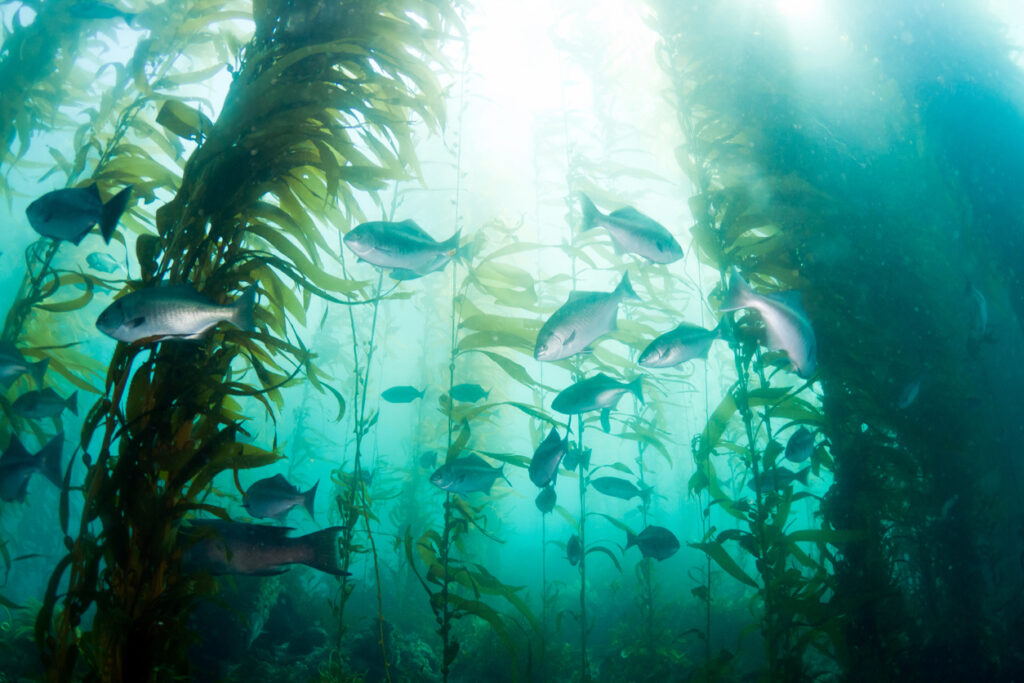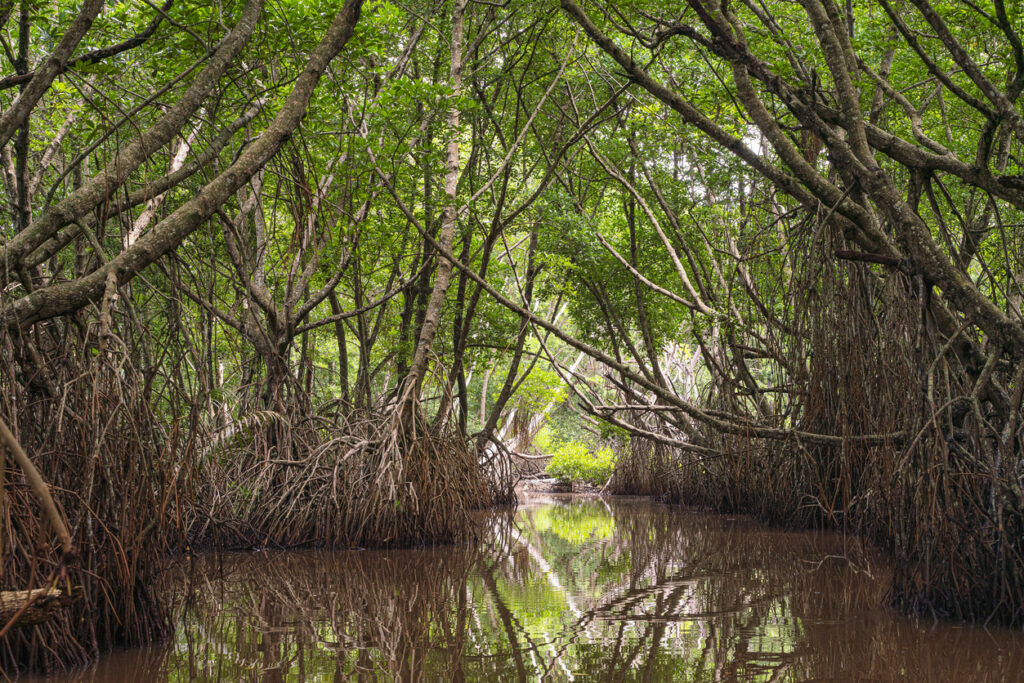The ocean is home to an abundance of sea creatures, most of whom are truly fascinating and have unique features in order to help them survive their environment. However, marine life also extends to a vast array of plants that have also evolved and developed to get the most out of their aquatic home. These plants play an important role in the ecosystem of the sea, and even though some of them don’t look very exciting, they are certainly worth learning a little bit more about!
With that in mind, let’s find out more about some of the strangest but interesting plants found in the sea.
Kelp
Kelp (Laminariales) is large, brown algae or seaweed that is typically found in shallower waters near the shore, as it needs sunlight to generate its energy through photosynthesis. While it might not look like much when it washes up on the beach, kelp is known for creating huge underwater forests that can reach heights of 200 feet.
It’s thought that kelp first appeared around 23 million years ago, and gets all of its nutrients from the water. Kelp is typically attached to the sea floor, growing upwards towards the surface in search of light – which is why it needs shallow water in order to survive.

Kelp can help to provide food and shelter for a huge range of fish, invertebrates and even some marine mammals. It can provide protection and shelter from predators and even rough weather. Kelp has been known to play a role in maintaining ecological balance, as well as being able to hold carbon that would otherwise end up out in the ocean contributing to global warming. This is known as carbon sequestration, a method of capturing and storing carbon dioxide.
Surf grass
Surf grass (Phyllospadix) is a type of seagrass. It is a perennial plant, which means that it will live for several years and regrow regularly. Surf grass is a marine flowering plant, and will usually find a rocky surface to attach to, in order to avoid being washed up on the shore or stranded out in the water.
But what makes surf grass interesting? This particular type of seagrass is unusual because it produces true flowers – but it gets better. Surf grass is one of the only plants that can pollinate under water as well as on the surface. This is known as hydrophilic pollination, which means water is required in the process of flowering.
Surf grass beds can support a number of different species of the ocean, including invertebrates and younger fish.
Mangroves

Mangroves are trees or shrubs that typically grow in thickets, and you’ll find them along tidal estuaries and salt marshes. They are particularly interesting because they have adapted to be able to survive in brackish water, thanks to special breathing roots that protrude from the water and supply much-needed oxygen to the roots in the water. This process also helps to remove salt, which means mangroves are able to thrive in conditions that would likely kill many other plants.
Mangroves play a very important role in marine life, as they provide shelter to a vast range of species from birds to mammals. Depending where they are found, you may discover animals like sharks, tropical fish, crocodiles and snakes! However, mangroves are also crucial for fighting climate change, as they can store carbon – just like kelp.
Waterwheel plant
The waterwheel plant (Aldrovanda vesiculosa) is the only existing member left of its family. It gets its name from the circular whorls that grow off its shoots. Unlike many other sea plants, the waterwheel plant is free floating and can move around.
However, this plant doesn’t rely solely on photosynthesis for its energy. The waterwheel plant is actually carnivorous, and those whorls off its shoots are traps! The plant captures small, aquatic invertebrates in its snap trap, very similar to a Venus flytrap except underwater. It only takes 10-20 milliseconds for the trap to close, making it one of the fastest movements in the animal kingdom. The waterwheel plant uses very fine hairs to detect its next meal, which can include eelworms, tadpoles and small fish.
These strange but fascinating plants offer lifelines to many marine species, keeping them safe as well as adding to the rich tapestry of our waters. Come and discover more about these interesting aquatic environments by visiting us at Tynemouth Aquarium – check out our visitor information for more!
